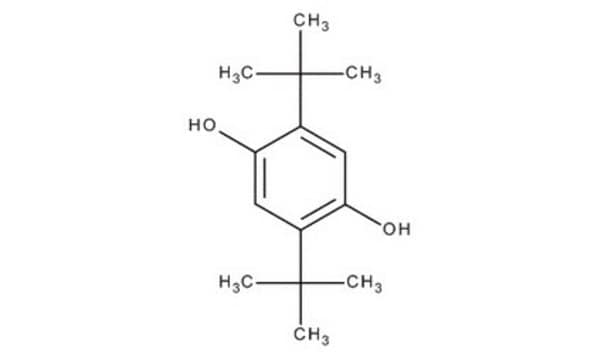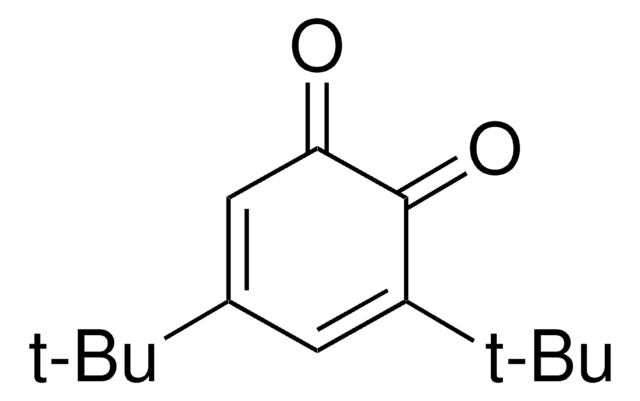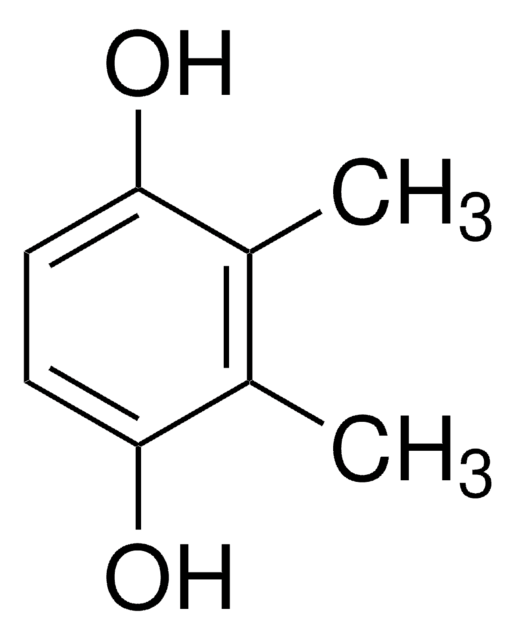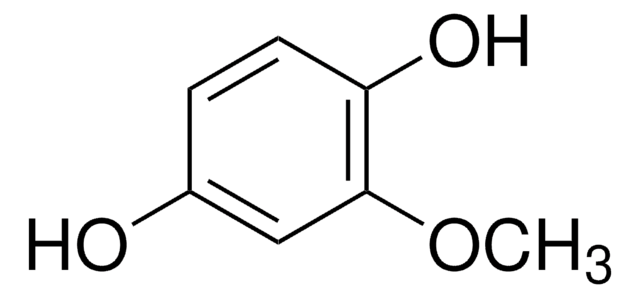112976
2,5-Di-tert-butylhydroquinone
99%
Synonyme(s) :
1,4-Dihydroxy-2,5-di-tert-butylbenzene, 2,5-Bis(1,1-dimethylethyl)-1,4-benzenediol, 2,5-Di-tert-butyl-1,4-benzenediol, 2,5-Di-tert-butyl-1,4-benzohydroquinone, 2,5-Di-tert-butyl-1,4-dihydroxybenzene, 2,5-Di-tert-butylquinol, 2,5-Dihydroxy-1,4-di-tert-butylbenzene, 2,5-Ditert-butylbenzene-1,4-diol, 3,6-Di-tert-butylhydroquinone
Sélectionner une taille de conditionnement
43,30 €
Sélectionner une taille de conditionnement
About This Item
43,30 €
Produits recommandés
Essai
99%
Forme
solid
Température d'inflammation spontanée
790 °F
Pf
216-218 °C (lit.)
Chaîne SMILES
CC(C)(C)c1cc(O)c(cc1O)C(C)(C)C
InChI
1S/C14H22O2/c1-13(2,3)9-7-12(16)10(8-11(9)15)14(4,5)6/h7-8,15-16H,1-6H3
Clé InChI
JZODKRWQWUWGCD-UHFFFAOYSA-N
Vous recherchez des produits similaires ? Visite Guide de comparaison des produits
Catégories apparentées
Application
Actions biochimiques/physiologiques
Mention d'avertissement
Danger
Mentions de danger
Conseils de prudence
Classification des risques
Acute Tox. 3 Oral - Aquatic Acute 1 - Aquatic Chronic 1 - Skin Sens. 1 - STOT SE 3
Organes cibles
Respiratory system
Code de la classe de stockage
6.1D - Non-combustible acute toxic Cat.3 / toxic hazardous materials or hazardous materials causing chronic effects
Classe de danger pour l'eau (WGK)
WGK 3
Point d'éclair (°F)
Not applicable
Point d'éclair (°C)
Not applicable
Équipement de protection individuelle
dust mask type N95 (US), Eyeshields, Gloves
Faites votre choix parmi les versions les plus récentes :
Déjà en possession de ce produit ?
Retrouvez la documentation relative aux produits que vous avez récemment achetés dans la Bibliothèque de documents.
Les clients ont également consulté
Active Filters
Notre équipe de scientifiques dispose d'une expérience dans tous les secteurs de la recherche, notamment en sciences de la vie, science des matériaux, synthèse chimique, chromatographie, analyse et dans de nombreux autres domaines..
Contacter notre Service technique













